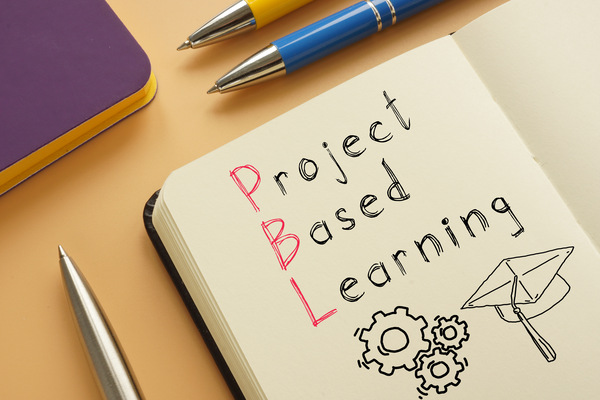When it comes to outdoor entertainment and family leisure, trampolines have evolved from mere playthings to robust structures that blend safety with excitement. Among these, the Vuly Thunder Pro stands out as a premium choice, promising durability, innovation, and a superior bounce experience.
This comprehensive review explores the Vuly Thunder Pro in detail, covering its features, customization options, assembly process, warranty, user feedback, and how it compares to its predecessor, the Vuly Thunder.

Overview of Vuly Thunder Pro
The Vuly Thunder Pro stands proudly as the pinnacle of Vuly’s trampoline engineering, designed with a strong emphasis on safety and performance. Building upon the success of its predecessor, the Thunder model, the Thunder Pro integrates advanced features and enhancements to elevate the bouncing experience to new heights. Crafted from top-tier materials and underpinned by innovative design principles, this trampoline redefines backyard fun for families and thrill-seekers alike.
Key to its design is the implementation of leaf springs, a departure from conventional coil springs. These leaf springs not only enhance durability but also deliver a smoother and more responsive bounce. Unlike coil springs that may create uneven jumping surfaces, leaf springs distribute weight evenly across the mat, ensuring a consistent and enjoyable experience for users of all ages. This innovative spring system underscores Vuly’s commitment to improving performance while prioritizing safety.
Durability is another hallmark of the Thunder Pro. Its frame is constructed from double-galvanized steel, renowned for its robustness and resistance to corrosion. This ensures the trampoline remains stable and secure, capable of withstanding various weather conditions without compromising its structural integrity. Additionally, the UV-resistant mat preserves its color and strength over time (according to this link) even under prolonged exposure to sunlight, prolonging the trampoline’s lifespan and maintaining its vibrant appearance.
Functionality and user convenience are central to the Thunder Pro’s design ethos. The safety enclosure, crafted from high-tensile materials, features a patented self-closing door mechanism. This not only enhances safety by preventing accidental falls but also facilitates easy entry and exit for users. The enclosure’s mesh design promotes airflow, keeping the jumping area cool and comfortable, even during warm weather.
Customization options further enhance the Thunder Pro’s appeal. The trampoline’s skirt is available in a variety of colors and patterns, allowing homeowners to seamlessly integrate it into their outdoor aesthetics. Optional accessories, such as the Vuly Basketball Set, Deck, Tent, and Mister, extend the trampoline’s functionality. Whether creating a shaded play area with the Tent or engaging in friendly games with the Basketball Set, these additions cater to diverse interests and age groups, enhancing the overall enjoyment of the Thunder Pro.
Innovation and continuous improvement are at the heart of Vuly’s approach to trampoline design. Feedback from users plays a pivotal role in refining and enhancing each iteration of the Thunder Pro. By actively listening to customer insights and real-world usage experiences, Vuly ensures that the Thunder Pro not only meets but exceeds expectations in terms of performance, successful safety testing (as seen here:: https://www.choice.com.au/babies-and-kids/children-and-safety/toys-and-safety-at-play/articles/how-we-test-trampolines) and user satisfaction.
Key Features of Vuly Thunder Pro
The Thunder Pro boasts several standout features that make it a leader in its category:

Leaf Springs Technology
Unlike traditional coil springs, the Thunder Pro utilizes leaf springs, which are not only safer but also provide a smoother and more responsive bounce.
Safety Enclosure
A robust safety net with a self-closing door ensures jumpers remain safely within the trampoline area at all times, minimizing the risk of accidents.
Weather Resistance
The frame is made from double-galvanized steel and the mat is UV-resistant, ensuring longevity even under harsh weather conditions such as intense sunlight or heavy rain.
Customizable Skirt
Enhancing its appeal beyond performance, the Thunder Pro offers customizable skirt options with various designs and colors, allowing users to personalize their trampoline to match their backyard aesthetic.
Pros and Cons of Vuly Thunder Pro
The Vuly Thunder Pro trampoline has gained popularity for its innovative design and high performance. Let’s explore the pros and cons of the Vuly Thunder Pro, highlighting its exceptional bounce quality, robust safety features, durable construction, and innovative elements, as well as any potential drawbacks to consider.
Pros:
- Exceptional bounce quality: The leaf springs provide a superior bounce that is smooth and responsive, catering to both children and adults.
- High safety standards: The robust safety enclosure and self-closing door offer peace of mind to parents, ensuring a secure environment for jumpers.
- Durable construction: Built with high-quality materials, including double-galvanized steel and UV-resistant mat, the Thunder Pro is designed to withstand years of use without deteriorating.
- Innovative features: The use of leaf springs instead of traditional coil springs demonstrates Vuly’s commitment to innovation and performance.
- Customization options: The ability to personalize the skirt adds a touch of style to the trampoline, making it a visually appealing addition to any backyard.
Cons:
- Higher price point: Compared to basic trampolines, the Thunder Pro is positioned at a higher price point due to its advanced features and superior-quality materials.
- Assembly can be time-consuming: While not overly complex, assembling the Thunder Pro may require significant time and effort, especially during initial setup.
- Space requirement: Its larger size may pose a challenge for smaller yards, requiring ample space to accommodate the trampoline and its safety perimeter.
The Thunder Pro Size Options
The Vuly Thunder Pro is available in three size options to suit different backyard spaces and user preferences:
1. Vuly Thunder Pro Medium
Ideal for smaller families or those with limited outdoor space, the Medium size offers a compact footprint without compromising on bounce quality or safety features. It provides an adequate jumping area while ensuring the same high standards of performance and safety found in larger models.
2. Vuly Thunder Pro Large
Designed for medium to large-sized yards, the Large model offers a generous jumping area suitable for multiple jumpers simultaneously. It strikes a balance between size and performance, catering to families who prioritize backyard fun and recreational activities.
3. Vuly Thunder Pro XL
For those seeking the ultimate trampoline experience, the XL size provides maximum jumping space, making it ideal for larger families or active jumpers who enjoy an expansive bounce area. It offers ample room for flips, tricks, and group play, ensuring everyone can participate in outdoor fun.
Customization: Accessories and Add-ons
Enhancing the Thunder Pro experience are a range of accessories and add-ons that further elevate its functionality and appeal:
- Vuly Basketball Set: Enables jumpers to shoot hoops while bouncing, adding an interactive element to trampoline play.
- Vuly Deck: Provides a convenient seating area or storage space for shoes and other belongings, enhancing the trampoline’s utility.
- Vuly Tent: Transforms the trampoline into a shaded play area, perfect for children to enjoy outdoor activities while protected from the sun.
- Vuly Mister: Attaches to the trampoline frame to cool jumpers during hot weather, ensuring comfort and extending playtime outdoors.
These accessories not only complement the Thunder Pro but also cater to different age groups and preferences, enhancing the versatility and enjoyment of the trampoline.
Assembly Guide and Tips
While assembling the Thunder Pro can be a multi-step process, following the provided instructions and utilizing online resources can streamline the setup. Here are some tips to ensure a smooth assembly:
- Prepare the Workspace: Clear the area where the trampoline will be assembled and lay out all parts and tools beforehand to avoid confusion during assembly.
- Follow Instructions Carefully: Refer to the assembly manual provided by Vuly and follow each step sequentially to ensure all components are installed correctly.
- Watch Instructional Videos: Utilize online instructional videos provided by Vuly for visual guidance, which can be particularly helpful for understanding complex steps or techniques.
- Enlist Assistance: Enlist the help of a second person for certain steps, especially when installing the safety enclosure or attaching springs, to ensure safety and efficiency.
By taking these precautions and following the assembly guidelines meticulously, users can effectively set up the Thunder Pro trampoline and enjoy its benefits without unnecessary complications.
Vuly Thunder Pro Warranty & Value
Vuly stands behind the Thunder Pro with a comprehensive warranty that underscores its commitment to quality and customer satisfaction:
- Frame and Springs: Covered under a 10-year warranty, ensuring durability and performance over an extended period.
- Mat and Net: Backed by a 5-year warranty, providing assurance against defects and damage caused by normal use.
- Accessories: Covered by a 1-year warranty, ensuring that any defects in craftsmanship or materials are addressed promptly.
This warranty offers peace of mind to trampoline owners, highlighting Vuly’s confidence in the Thunder Pro’s durability and longevity. Despite its higher initial cost, you can use this Vuly discount code to take some money off. But the fact of the matter is, the Thunder Pro’s superior construction, advanced features, and extended warranty contribute to its long-term value proposition, making it a worthwhile investment for families seeking a safe and enjoyable outdoor activity.
User Reviews and Testimonials
Feedback from users further reinforces the Thunder Pro’s positive reputation and impact on outdoor recreation:
- The bounce quality is exceptional, and my kids love spending hours jumping on it.
- Assembly was straightforward with the help of the instructional videos, and the end result exceeded our expectations.
- The safety enclosure is well-designed and sturdy, providing peace of mind while my children play.
These testimonials highlight the Thunder Pro’s appeal among families and individuals seeking a reliable, durable, and enjoyable trampoline experience in their backyard.
Vuly Thunder vs Thunder Pro Trampoline
While both the Vuly Thunder and Thunder Pro offer exceptional quality and safety, several key differences distinguish the Thunder Pro as the premium option:
Spring System
The Thunder Pro utilizes advanced leaf springs, which provide a smoother and more responsive bounce compared to the traditional coil springs used in the Thunder model.
Enclosure Design
The Thunder Pro features a self-closing door on its safety enclosure, enhancing safety by ensuring jumpers remain securely inside the trampoline area at all times. This feature is not present in the Thunder model.
Customization Options
The Thunder Pro offers extensive customization options, including personalized skirts and various accessories such as the Vuly Basketball Set and Tent, allowing users to tailor the trampoline to their specific preferences and needs.
Choosing between the two models depends on individual preferences, budget considerations, and available backyard space. The Thunder Pro appeals to those who prioritize advanced performance, enhanced safety features, and customization options, making it suitable for families and enthusiasts seeking a premium trampoline experience.
Conclusion: Is the Vuly Thunder Pro Worth It?
In conclusion, the Vuly Thunder Pro stands out as a premium trampoline that combines innovation, safety, and durability, offering an unparalleled backyard experience for families and outdoor enthusiasts. Its advanced leaf spring technology ensures a superior bounce, while the robust safety features, including a self-closing enclosure, provide peace of mind for parents. The use of high-quality materials, such as double-galvanized steel and UV-resistant mats, guarantees longevity and resilience against various weather conditions.
Customization options and a range of accessories further enhance the trampoline’s appeal, allowing users to tailor it to their preferences and extend its functionality. Despite its higher price point and the time investment required for assembly, the Thunder Pro’s exceptional performance, safety standards, and aesthetic versatility justify the investment.
User feedback and extensive warranties reinforce the Thunder Pro’s value, making it a worthwhile addition to any backyard. Whether you seek a safe and fun activity for your children or a robust structure for fitness and recreation, the Vuly Thunder Pro delivers on all fronts, making it a standout choice in the realm of trampolines.










